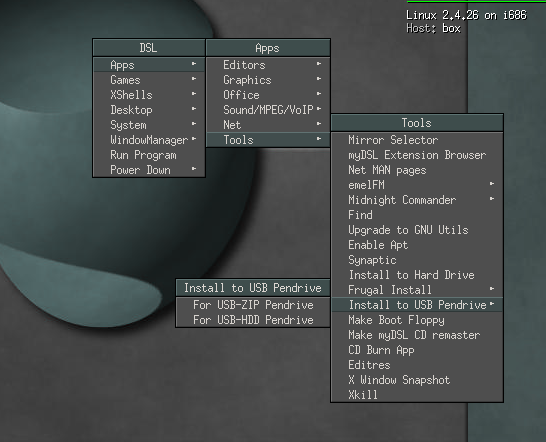Last time, I wrote about Live CDs and how you can make your own custom one. Live CDs are great, but let’s face it, sometimes even a CD is just too big to carry around. You male geeks probably have no idea what I’m talking about, but the other ladies can testify that the pockets on our clothes are just too small to carry around anything bigger than a small cell phone. CDs also have the magic ability to go from pristine to horribly scratched about 5 minutes before you need them and, since they’re CDs, don’t save changes.
Every bootup is like a clean install. This can be great if you have a tendency to break your configs. It’s actually a great way to poke at your system and break things without any repercussions. However, being able to persist changes could be nice, right? Aibek wrote about a few Windows-based solutions to this last week. Linux users can make a persistent live USB stick to solve these problems.
You have two options when getting or making a persistent USB drive. The first option is to have the operating system installed natively on the drive. This is probably more common. The other way is to have a portable virtual machine on the drive which loads using Qemu. The main advantage of the latter is to avoid having to reboot. The former is the preferred choice when there is a chance that the computer lacks a hard drive or if you need to rescue data from a MacBook Air, since they lack optical drives.
There are a few different ways to get one of these. The easiest is to buy a 4GB Mandriva Flash 2008 or 2GB Damn Small Linux USB Drive. The Damn Small one has both an installed system and a Qemu-based system on it, though these do not, to my knowledge, share files. You do have the option to use whichever is more convenient at the time, though. The alternative is, of course, to make one yourself. I guess the remaining option would involve Tom Sawyer-ing your annoying little brother into doing it.
The main difference in installation methods will be whether or not you need to be running from a Live CD already. On the Ubuntu Wiki, there are directions to install which do not require that you be running from a Live CD, though you do need to have the .iso available. The directions are pretty complicated, but all of the steps are there. A friend of mine, who regularly uses a persistent Ubuntu flash drive to boot up and watch Star Trek during his office hours, recommends following Pendrive Linux’s Ubuntu 7.10 directions if possible. Those directions do require that you be running from a Live CD, but he said they were considerably more straightforward. There’s even a nice little script to automate parts of it, and you don’t have to edit any configuration files like you do with the wiki’s directions. Pendrive Linux has directions for tons of distros, including SuSE, PCLinuxOS, Gentoo, and SLAX. Many of these involve scripts for Windows so you can install to the flash drive from inside Windows without a Live CD. Really guys, if you want an easy install—one that doesn’t even involve figuring out how to burn an ISO with whatever CD burning software you have—this is it.
If your flash drive is really small and you don’t mind booting from a Live CD, Damn Small Linux’s Live CD includes a menu option to install to a flash drive. Damn Small is only 50MB, so even that 3 year old 128MB stick you’ve got in the back of the junk drawer will work. The old Pentium II will also be able to handle it extremely well. This is a great choice for old hardware.
I wish I’d known about these the first time my laptop went out of commission. I carried around an external hard drive in an enclosure for 3 weeks, booting random computers from it, while it was being fixed. In a world where CDs are increasingly seen as annoyingly large, a full 3.5″ hard drive is a crazy thing to carry around.

0 comments:
Post a Comment